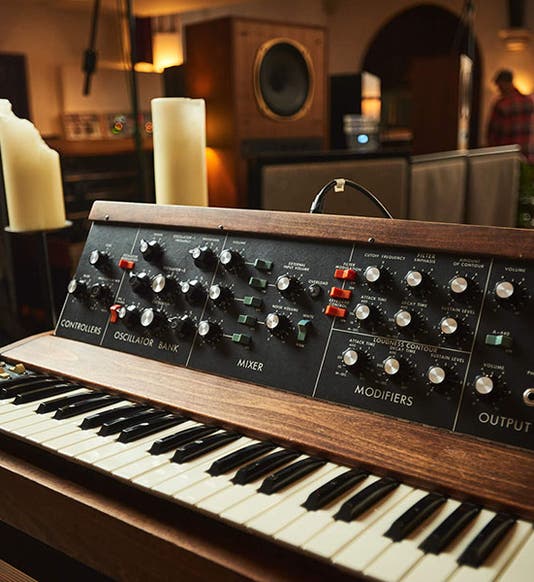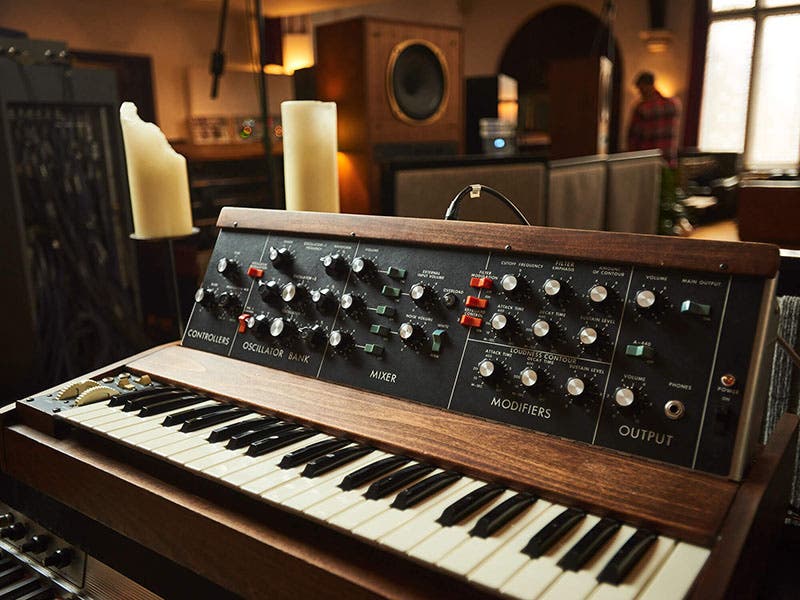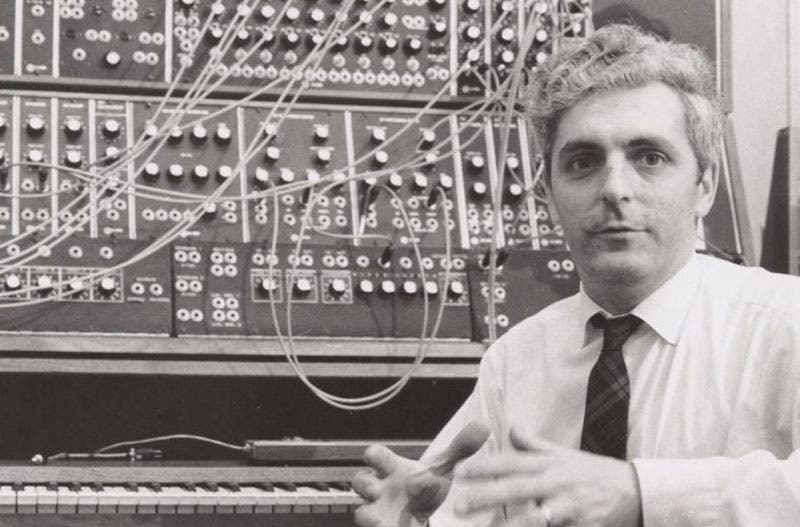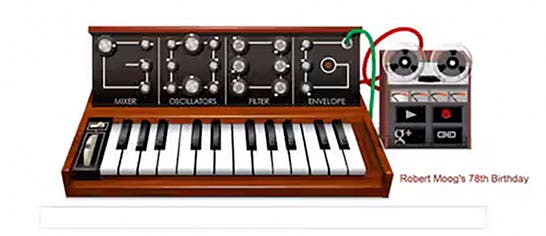Scientist of the Day - Robert Moog
Robert Moog, an American electronics engineer, died Aug. 21, 2005, at the age of 71. Moog became interested in electronic music at an early age, perhaps influenced by Bebe and Louis Barron and their all-electronic score for the sci-fi film Forbidden Planet (1956), although before that film appeared, Moog was already manufacturing and selling theremins, an ethereal electronic instrument invented by Leon Theremin, and which had been used in another influential sci-fi film, The Day Earth Stood Still (1951), which came out when Moog was 17 years old.
In the 1960s, Moog invented his own instrument, the Moog synthesizer, the first analog synthesizer, which produced tones electronically. The Moog used transistor oscillators to generate tones – sine waves, square waves, saw-tooth waves – which he could then shape with other circuits, adjusting the attack, sustain, decay, and release phases that distinguish, say, a violin tone, from that of a flute. Eventually, he had the essential idea of mating the synthesizer with a piano-like keyboard, so that it could actually be "played," although it was still very much one-note-at-a-time for the first years. The original synthesizer was “modular,” meaning it consisted of separate circuits and filters that were connected with patch cords, as we see in the third image.
Moog showed off his creation at a booth at the Monterey Pop rock festival in 1967, where it attracted the attention of the Doors and the Byrds, both of whom used it for albums released in 1968. (One must remember that there were no electronic keyboards at that time; only the Hammond B-3 organ provided an alternative to the piano, and the B-3 was electro-mechanical in operation, not electronic).
But the real launching event for the Moog synthesizer was a classical album that came out in 1968, Switched-on Bach, with Wendy Carlos (then known as Walter Carlos) at the keyboard. Carlos suggested the collaboration to Moog, her idea being that since Bach was essentially one-note-at-a-time anyway, his music would provide a perfect showcase for the Moog synthesizer. She chose several Bach airs and inventions, a cantata (Jesu, Joy of Man's Desiring), two preludes and fugues from the Well-tempered Clavier, and the third Brandenberg Concerto, which calls for a cadenza that Carlos provided on the synthesizer. She laid down the tracks slowly on a custom 8-track machine that she built herself, with Moog obliging Carlos with modifications upon request. That is Carlos at work with the Moog synthesizer in our third image.
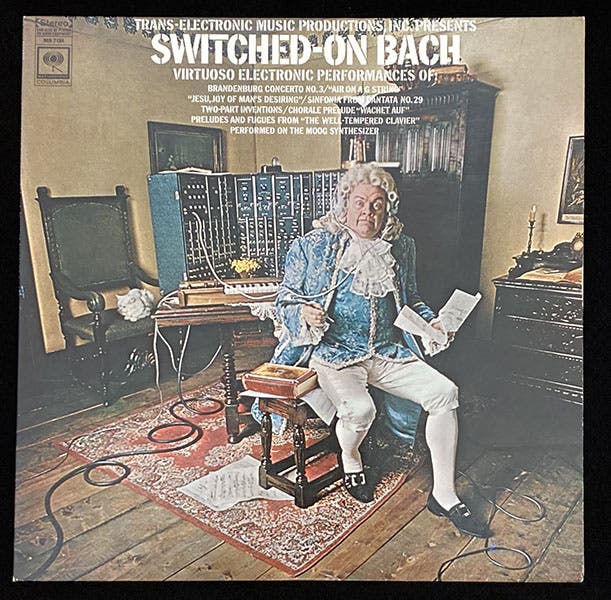
First issue cover for LP album, Switched-on Bach, with Walter/Wendy Carlos playing the Moog modular synthesizer, Columbia Records, 1968. This cover was soon replaced with another where Bach is standing, the headphones have been taken off, and Carlos’s name has been added (author’s collection)
The record was issued by Columbia Records and was marketed as a novelty piece, as the silly cover suggests (fourth image). Little did Columbia know what they had on their hands. Listeners who had never paid any attention to a Bach “prelude and fugue” on the piano or harpsichord were now enthralled by the Moog/Carlos version, and the album went to the top of the pop charts and the classical charts, and stayed there long enough to sell a million copies (only the second classical album to cross that threshold) and win three Grammy awards.
Moog is often accused of lacking business acumen (he only patented one circuit of his synthesizer, leaving the rest free for the taking), but he was sharp enough to come out with the Minimoog Model D in 1970, a much smaller version of his synthesizer that was suitable for concert play (first image). It had no patch cords and could be packed in a suitcase. Best of all, it had a pitch wheel for varying pitch on demand. Moog sold 12,000 Minimoogs before he had to sell his business in 1981 (I guess his business sense was suspect). The Minimoog has been called "the most famous synthesizer in music history” by numerous authorities, because of the impact it had on rock concerts for the decade of its production.
It used to be that you could find excerpts from Switched-on Bach on YouTube, but they have all been removed, for some reason. In fact, you cannot find anything by Wendy Carlos aside from several BBC interviews. But there are lots of performances on YouTube of Bach on the Moog “in the style of Wendy Carlos,” which will probably have to do.
For the 78th birthday of Robert Moog (in memoriam), Google on May 23, 2012, published a doodle that consists of a Minimoog that you can actually play and control (the filter, mixer, and envelope controls at the top actually work). You can play it with your mouse, or with the QWERTY row on your keyboard for the white keys, with the number row above controlling the black keys. Robert Moog would have been very pleased with this digital version of his analog creation. You can access it here.
William B. Ashworth, Jr., Consultant for the History of Science, Linda Hall Library and Associate Professor emeritus, Department of History, University of Missouri-Kansas City. Comments or corrections are welcome; please direct to ashworthw@umkc.edu.

